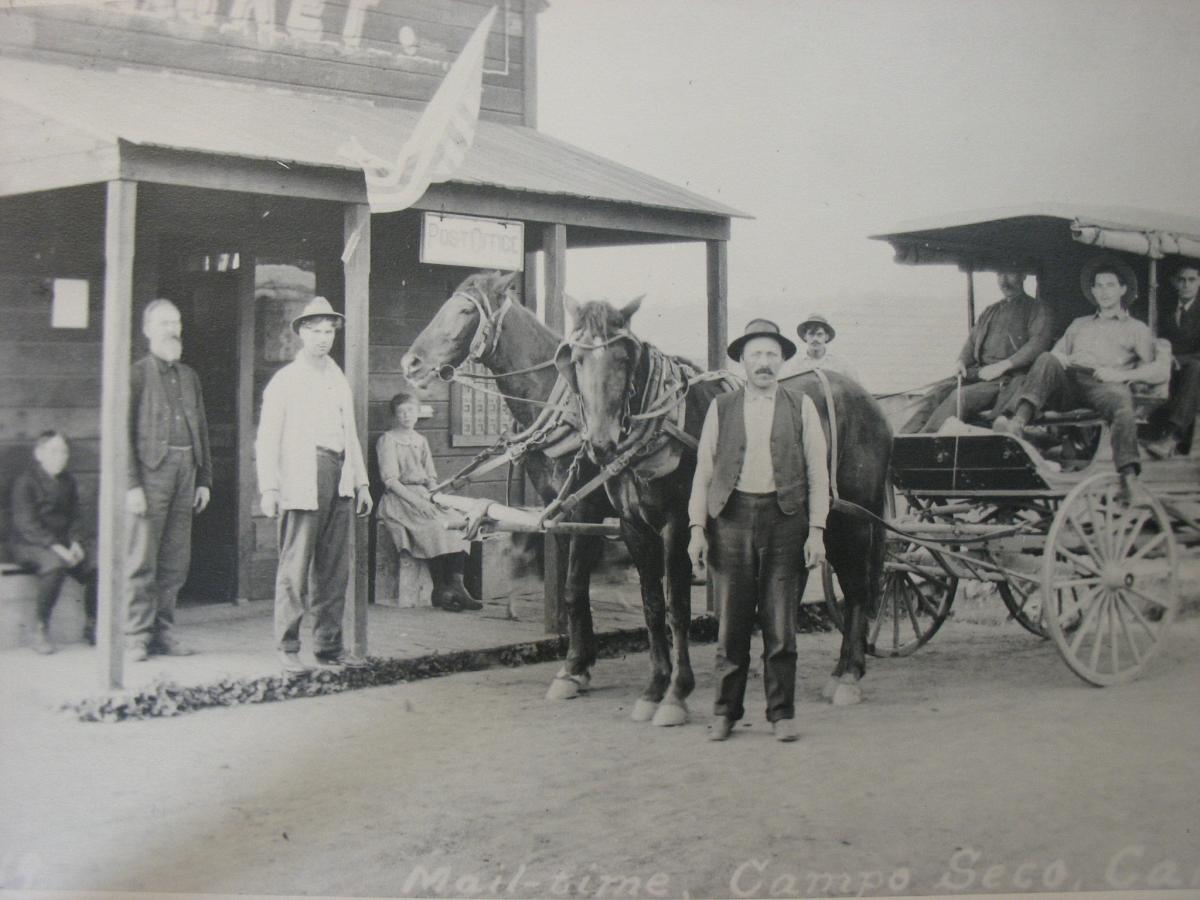HISTORIC CAMPO SECO POSTAL FACILITY TO CLOSE
Sal Manna —Fri, 09/20/2019 - 10:13

By Sal Manna
The post office at Campo Seco was not the first to be established in Calaveras County during the Gold Rush era--it was the 13th. But it was the only 1850s post office in west Calaveras to remain in operation for more than 100 years. Established on February 3, 1854, the post office was discontinued on December 30, 1963, when it became a rural station for the Valley Springs post office and no longer had a postmaster. On September 30, 2019, the station at Campo Seco will finally close. Campo Seco’s first postmaster was Thomas Moore Pawling, a 27-year-old from Philadelphia who had been educated as a lawyer at Dickinson College in Pennsylvania. He served for nearly two years before moving to Jackson in Amador County, taking the posts of county clerk and county judge there. His successor, Jared Young Dixon, was 30 years old when he took the helm. Born in Louisiana, where he attended Centenary College, Dixon held the job for about a year-and-a-half and, after exiting, married Louisa Ann Wildermuth, the half-sister of John Hanna Wildermuth in 1857 (see Something From Nothing #19: “Our Historic Homes: The Wildermuth House”). Soon after, Young became an expressman, responsible for the delivery of goods via stagecoach, and was based in Jamestown in Tuolumne County. He was followed by another Southerner, Virginia-born James Bumgardner McGilvray, who was also in his early 30s. Serving until mid-1861, McGilvray then moved to San Francisco, where he became a conductor and receiving clerk for the M&O Railroad. Taking over for him was 40-year-old New Yorker Nathan Talcott Root, who by late 1865 also headed to San Francisco, where he gained employment as a bookkeeper. His successor, Elias Redman Syme, was only 21 years old when he landed the job. After a year-and-a-half stint, the Arkansas-born member of a pioneer Campo Seco family also relocated to San Francisco, where he became a clerk at the U.S. Mint. There would be 11 more postmasters, from shoemaker James C. Kelly (1867-1873); merchant David B. Nye (1873-1887, 1891); blacksmith George Chaloner Graves (1887); Hattie Creighton, daughter of butcher James (1888), and Kate Belle Murchison (1889-1891), who married English-born saloonkeeper John Euler Lang (see Something From Nothing #88: “The Original Town Halls Of Valley Springs”) to Mary Elliott Plummer Cutter, wife of farmer George (1892-1909); Italian-born merchant Antone Zana (1909-1912); merchant John Fernando Paulk (1912 to his death in 1926, see Something From Nothing #112: “Shopkeepers: Paulk Bros. & Johnson”); his son John Jr. (1926-1928); Mrs. Letitia Smith (1928-1930), wife of grocer William Carlton Smith, and, finally, Mrs. Lila Smith, wife of salesman James Smith. She took the helm in early 1930 after the post office had been ordered discontinued for two weeks. When the order was rescinded, she held the job. By the end of the year, after divorcing James Smith, she once again returned to her maiden name--Edalgo. Mrs. Lila Edalgo served for 33 years. When she retired in 1963, the post office retired with her.
Copyright 2019 Salvatore John Manna
